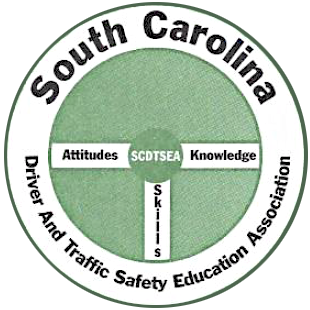To Click or Not To Click—The Seatbelt
To click or not to click the seat belt—that shouldn't be a question. You cannot ride a roller coaster without a safety belt. You cannot fly in an airplane without a safety belt. You should not ride in a vehicle without a seat belt! One of the keys to life is to buckle up before driving.
A collision's force of impact can only be realized by watching slow motion photography or by seeing totaled vehicles. Would you believe a crash at 55 mph without wearing a seat belt is like a free fall from a 15-story building (University of California)? Would you believe a crash at 40 mph is 16 times worse than a crash at 10 mph (squaring of speed)? Would you believe if you are thrown out of a vehicle, you are 25 times more likely to die (ADTSEA)? Would you believe more than half of the crashes causing injury or death happen at speeds of less than 40 mph and within 25 miles of home (ADTSEA)? You think seat belts are confining? Try a coffin!
If your vehicle is involved in a crash, the seat belt is like a brake preventing you from having a second crash—your going the speed of the vehicle and hitting an object or objects until finally coming to a stop. Research has also shown that seat belts will keep you from having the third crash—your brain hitting your skull (like hitting cement) and turning into a soupy substance or your heart going through your rib cage (like being stabbed with a number of knives). Safety is at its best when you snap the buckle over your chest!
A myth about seat belts is thinking they will trap you in a fire or under water. The NHTSA (National Highway Traffic Safety Administration) has studied this. They concluded that “incidents involving fire or water account for half of 1 percent of all crashes,” which is not a significant reason. NHTSA adds, “but more importantly, you can't escape such dangers unless you're conscious. Wearing a seat belt gives you a much greater chance of being conscious and able-bodied.” Another involves the idea that a seat belt is not necessary when vehicles have air bags. “Air bags are designed to protect a buckled occupant. When the occupant is unbuckled, air bags become less effective—or worse, can become deadly themselves” (NHTSA: “Don't Get Faked Out”).
Part of the ADTSEA Curriculum mentions that during daylight hours in 2008 45 percent of passenger vehicle occupants killed in crashes were not wearing seat belts. During the nighttime hours it was 64 percent. In January of this year there were 25 fatalities in South Carolina with vehicle access to seatbelts and 17 fatalities were not wearing seat belts (SC Office of Highway Safety & Justice Programs and SC Department of Public Safety).
Even though you may be an excellent driver, seat belts are a must—because who can you trust? A seat belt is a life belt. It will keep you behind the wheel so you can also control the vehicle in a crash. Also, you should use a child seat instead of holding a child because the forces of impact could crush a child. Multiply your weight by whatever speed you think you would drive, and that will give you an idea of some of the forces involved.
I hope this article encourages you to wear your seat belt at all times. May you say, "I wouldn't be caught DEAD without my safety belt because I could be caught DEAD without it!" Buckle up! The life you save may be your own.
Joe Sabbadino
Driving Educator
SCDTSEA Public Relations

